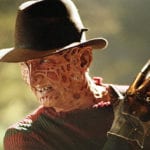 Technology
Technology  Technology
Technology  Humans
Humans 10 Everyday Human Behaviors That Are Actually Survival Instincts
 Animals
Animals 10 Animals That Humiliated and Harmed Historical Leaders
 History
History 10 Most Influential Protests in Modern History
 Creepy
Creepy 10 More Representations of Death from Myth, Legend, and Folktale
 Technology
Technology 10 Scientific Breakthroughs of 2025 That’ll Change Everything
 Our World
Our World 10 Ways Icelandic Culture Makes Other Countries Look Boring
 Misconceptions
Misconceptions 10 Common Misconceptions About the Victorian Era
 Mysteries
Mysteries 10 Strange Unexplained Mysteries of 2025
 Miscellaneous
Miscellaneous 10 of History’s Most Bell-Ringing Finishing Moves
 Technology
Technology Top 10 Everyday Tech Buzzwords That Hide a Darker Past
 Humans
Humans 10 Everyday Human Behaviors That Are Actually Survival Instincts
 Animals
Animals 10 Animals That Humiliated and Harmed Historical Leaders
Who's Behind Listverse?

Jamie Frater
Head Editor
Jamie founded Listverse due to an insatiable desire to share fascinating, obscure, and bizarre facts. He has been a guest speaker on numerous national radio and television stations and is a five time published author.
More About Us History
History 10 Most Influential Protests in Modern History
 Creepy
Creepy 10 More Representations of Death from Myth, Legend, and Folktale
 Technology
Technology 10 Scientific Breakthroughs of 2025 That’ll Change Everything
 Our World
Our World 10 Ways Icelandic Culture Makes Other Countries Look Boring
 Misconceptions
Misconceptions 10 Common Misconceptions About the Victorian Era
 Mysteries
Mysteries 10 Strange Unexplained Mysteries of 2025
 Miscellaneous
Miscellaneous 10 of History’s Most Bell-Ringing Finishing Moves
10 Films That Skirted Hays Code Censorship
From 1934 to 1968, the Motion Picture Production Code, more commonly known as the Hays Code, provided guidelines to American filmmakers concerning what its board members considered acceptable film content. By adopting these guidelines, Hollywood film studios avoided government censorship. The Code provided a list of general prohibitions and cautions concerning uses or depictions of “profanity” and “vulgar expression,” “nudity,” drug trafficking, “sex perversion,” “white slavery,” “miscegenation,” “sex hygiene and venereal diseases,” “scenes of actual childbirth,” “sex organs,” “ridicule of clergy,” and “willful offense to any nation, raced, or creed,” as well as an assortment of 25 other “items that require special care.”
Three years after the institution of the Code, director Leo McCarey’s screwball comedy The Awful Truth provided what amounted to “an instruction kit” by which to circumvent the Code’s restrictions and prohibitions. To skirt the guidelines, “lines were rewritten, dishabille scenes adroitly shuffled, and anatomies piquantly draped.”
Other films used these and other techniques to evade the Code. Overall, the tactics were quite successful in most cases, and the filmmakers were able to avoid government censorship by adhering to (or appearing to adhere to) the industry’s own voluntary policing of its products. The subterfuges, ruses, tricks, and other maneuvers filmmakers used were often ingenious as well as diverting and, most importantly, from the filmmakers’ perspective, they allowed movies to give audiences what they’d paid to see—the very thrills the Code was supposed to deny them.
Top 10 Ridiculous Instances Of Censorship In Pop Culture
10 Notorious (1946)
Under the heading of “Sex,” the Code prohibited “excessive and lustful kissing.” It may be true that the long lip lock that T. R. Devlin (James Stewart) lays on Alicia Huberman (Ingrid Bergman), without breaking, as “they walk around the room,” is intended to symbolize “the moment early in a relationship when lovers cannot bear to be parted.” However, the length and intensity of the kiss could have violated the Code’s injunction against “scenes of passion” that involve “excessive and lustful kissing,” had the actors not briefly come up for air occasionally during their two-and-a-half-minute-long expression of romantic togetherness. The brief breaks would allow the director, Alfred Hitchcock, to contend that the long-lasting kiss was actually a series of much shorter, successive tokens of romance.
9 Top Hat (1935)
Top Hat’s director, Mark Sandrich, employed a different strategy for evading one of the Code’s many no-nos. An instance of profanity forbidden by the Code was “damn.” During a ride in a horse-drawn cab, which dancer Jerry Travers (Fred Astaire) has commandeered, pretending to be the regular driver, Dale Tremont (Ginger Rogers) asks about the racehorse that Travers claims recently won the Grand National. He tells her that the horse has a “pedigree” and was sired by Man O’ War. Tremont wants to know which mare is the horse’s dam. He replies, “Oh, I don’t know, Miss, he didn’t give a . . . .” Breaking off the sentence, the dancer leaves it to the audience to make the connection between “dam,” meaning the horse’s female parent, and the curse word “damn” that’s forbidden by the Code. The trick worked, and the “obscene reference” slipped past the Code enforcers’ notice.
8 The Girl Can’t Help It (1956)
The Code had a thing or two to say about nudity, too. “Complete nudity” was totally verboten, as was “any lecherous or licentious notice [of total nudity] by other characters in the pictures.” For that matter, even total nudity shown only “in silhouette” was off-limits. However, a generous display of Jayne Mansfield’s cleavage was likely titillating enough for the audience watching The Girl Can’t Help It, and that’s exactly the shot director Frank Tashlin exhibited when, throughout much of the film, his curvaceous star gives viewers more than an eyeful.
7 Make Way for Tomorrow (1937)
While the Code recognizes that “adultery is sometimes necessary plot material,” its guidelines also dictate that such unfaithfulness “must not be explicitly treated or justified or presented attractively.” In the film Make Way for Tomorrow, director Leo McCarey used innuendo to imply that Rhoda Cooper (Barbara Read) had left home after having a tryst with an older married man. The man’s wife telephones Ma Cooper, alerting her to her daughter’s love affair and threatening the young woman with scandal. Unlike the household maid, who eavesdrops on the call, the audience does not hear the particulars of the conversation between Ma and her caller, because, “to speak the transgression is to call down judgment upon the sinner” and, of course, to violate the Code’s dictum that adultery “ must not be explicitly treated.”
6 Strangers on a Train (1951)
Concerning murder, the Code advised, “Brutal killings are not to be presented in detail.” Such prohibitions never stopped director Alfred Hitchcock from depicting vicious killings. In Psycho (1960), he concentrated on a slashing knife amid glimpses of the victim’s bare flesh as the body double for Marion Crane (Janet Leigh) struggled vainly to protect her naked body from the flashing blade. In Strangers on a Train, Hitchcock uses a different, equally ingenious technique to bypass the Code’s guidance against depicting “brutal killings.” As Bruno Anthony (Robert Walker) strangles Miriam Haines (Kasey Rogers), the heinous crime is shown, in a “wide-angle” distortion, as reflections in her eyeglasses, thus symbolizing the killer’s “twisted mind.” In evading the Code’s prohibition against portraying “brutal killings in detail,” Hitchcock adds artistry as well as horror to the film.
Top 10 Ways Google Is Censoring Free Speech
5 Wings (1927)
Another way around the Code’s restrictions on the use of profanity and vulgarity was conceived by director William A. Wellman or the actors in the Academy Award-winning Wings. The Code forbade “obscenity in word, gesture, reference, song, or by suggestion,” which would seem to eliminate any and all uses of the banned words on the Code’s list. However, the film’s fighter pilots skirted the prohibition by merely mouthing, rather than voicing, profanities. Nevertheless, it was clear to audiences that “salty language” was being used during dogfights, and the Hays Commission tightened the Code’s prohibition against the use of such language.
4 Gone with the Wind (1939)
After being cautioned that the use of “damn” by Rhett Butler (Clark Gable) at the movie’s conclusion might not sit well with the Hays Office, Gone with the Wind’s producer David O. Selznik recommended that director Victor Fleming film two endings to the film, one with and the other without the offensive word. However, in meeting with the Hays Office, Selznik didn’t mention the alternative endings.
Meanwhile, a list of possible replacement lines was devised, none of which had the punch of the original “frankly, my dear, I don’t give a damn.” Among the candidates for substitution, all of which started with “frankly, my dear,” were “I don’t care,” “it leaves me cold,” “it has become of no concern to me,” “I don’t give a hoot,” “I am completely indifferent,” and “the whole thing is a stench in my nostrils.” It’s hard to imagine Gone with the Wind ending on such a note. Fortunately, Selznik was able to sell the Hays Office on his retaining the use of “damn,” although his doing so meant that the Code had to be changed; from then on, the use of the word would be “discretionary.”
3 Bluebeard’s Eighth Wife (1938)
Billy Wilder co-wrote the screenplay for Bluebeard’s Eighth Wife. To go as far as suggesting that he found the Code’s restrictions and prohibitions about depictions of sex to be inspiring might be a stretch, but Wilder did say that he thinks that the guidelines challenged his own and his fellow filmmakers’ creativity. “We had to operate cunningly to outwit the censors,” he said, “and this made us write more subtly.” Since “even a puny little curse like ‘you bastard’ or ‘you son of a bitch’” were off-limits, Wilder added, he and his co-writer Charles (“Charlie”) Brackett had to come up with a way of making their characters sound as if they were cursing. In place of “son of a bitch,” they wrote “if you had a mother, she would bark.” Such plays on words allowed the screenwriters to bypass the Code’s strict prohibitions and remain true to the nature of the film’s characters.
2 Tarzan Films (1928-1948)
Although scanty, the loincloth that Tarzan (Johnny Weissmuller) wore in the Tarzan movies was acceptable to the Hays Office, as was the actor’s partial nudity: he frequently swung about on vines, bare-chested, even in the company of Jane (Maureen O’Hara, in most of the pictures). What bothered the censors was the jungle lord’s chimpanzee, or, more precisely, Cheeta’s sex organs. The Hays Code’s prohibition of genital displays didn’t apply only to human actors. Chimps and other animals were also covered (so to speak). As Johnny Weissmuller, Jr., observes, in his biography Tarzan My Father, “Cheeta and his simian siblings” had to wear “body stockings” so that their private parts wouldn’t offend Hays Office sensibilities. The Code nixed the “exposure of the genitals,” including those of animals, “real or stuffed.”
1 Every Day’s a Holiday (1938)
In her last picture, Every Day’s a Holiday, sex goddess Mae West faced the same challenges she’d encountered in most, if not all, of her previous films: the prohibitions and restrictions imposed upon the American movie industry by the Hays Code. Of course, by this stage of her career, she’d become an expert at skirting the guidelines. “Don’t forget, dear, I invented censorship,” she bragged, with typical hyperbole. “Imagine censors that wouldn’t let you sit in a man’s lap! I’ve been in more laps than a napkin.”
Over the years, West collected “tricks for handling the censors.” Using the bait-and-switch tactic, she would pen lines that she suspected the Hays Office would insist be deleted only “so the others could stay in.” She was able to succeed, despite the Hays Code’s strict guidelines, she implied, because her movies weren’t based on “nudity and talking dirty,” but on “a good story and believable characters,” and she knew the characters she played. Peaches O’Day, the protagonist of Every Day’s a Holiday, West said, was “a girl who believed if you kept a diary, some day it would keep you.” The Hays Office didn’t blunt her career, she insisted, but sharpened it, just as its prohibitions also further honed her wit.
10 Family Films Banned For Stupid Reasons








